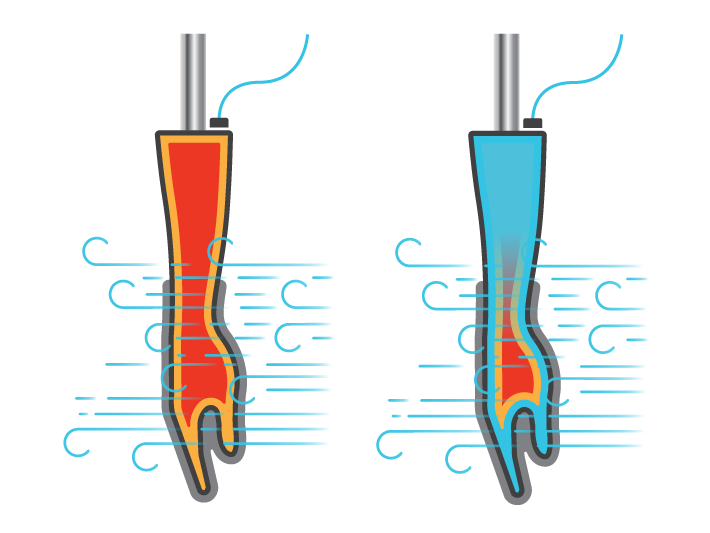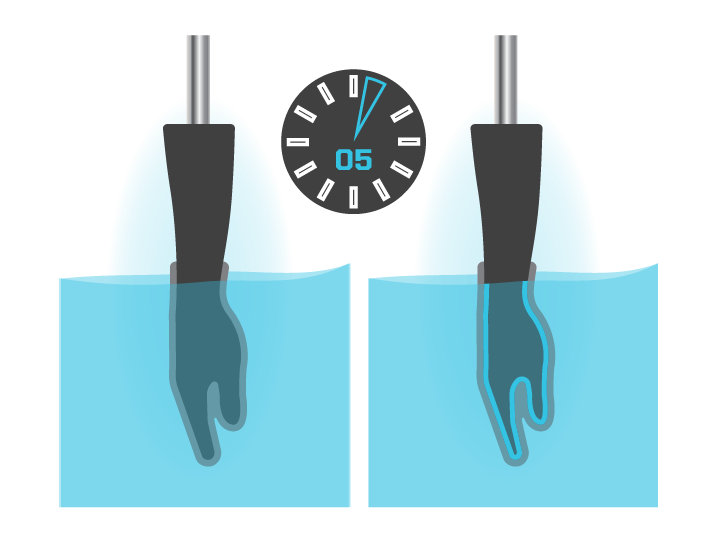Winter Insulated Gloves
EN 511 - Cold Environments
Air temperature, wind speed, and moisture present major challenges for working hands in cold environments. EN 511 specifies the requirements and test methods for winter gloves designed to protect against convective and conductive cold down to -50 °C.

CONVECTION
The process of losing heat through the movement of air or water on the skin.
CONDUCTION
The process of losing heat through physical contact with another object.
heat retention
Refers to the amount of heat an object or material can store over a period of time.
CONVECTIVE COLD TEST
11X
Performance Levels 0–4
The glove sample is place on an electrically heated mannequin hand that measures the amount of power required to maintain 30°C and 35°C in a controlled environmental chamber.
The chamber is cooled down to 20°C below that of the heated hand, and constant air flow is applied. The more electrical power required, the lower the thermal insulation rating of the glove.


CONTACT COLD TEST
11X
Performance Levels 0–4
The glove sample is placed between metal plates which are at different temperatures in order to measure the temperature drop, also knows as thermal resistance.
*R-value depends on material resistance to heat conduction, as well as the thickness of the material normalized to the thermal conductivity.


WATER PENETRATION TEST
11X
Performance Levels 0–1
The glove sample is fully submerged in water for 5 minutes to measure its permeability. If the glove maintains impermeability for the 5 minute duration, it will receive a Level 1 "Pass Rating". If the glove takes on water during the 5 minute duration, it will receive a Level 0 "Fail" rating.
